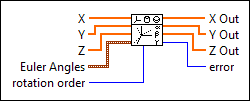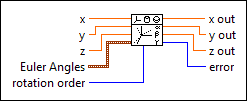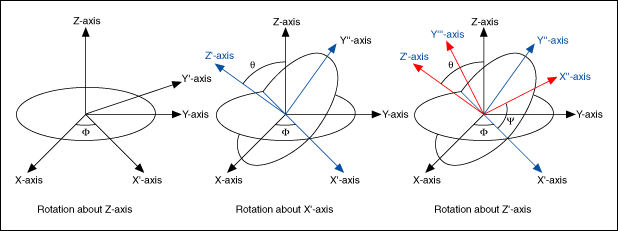3D Cartesian Coordinate Rotation (Euler) VI
Owning Palette: Geometry VIs
Requires: Full Development System
Rotates a three-dimensional Cartesian coordinate system in the counterclockwise direction using the Euler angles method and returns the new coordinate of the given point. Wire data to the X input to determine the polymorphic instance to use or manually select the instance.
Use the pull-down menu to select an instance of this VI.
 Add to the block diagram Add to the block diagram |
 Find on the palette Find on the palette |









 ,
,  , and
, and  as shown below (use the default rotation order Z-X-Z as an example):
as shown below (use the default rotation order Z-X-Z as an example):
 <
< 
 ;
;  ;
;  ,
,